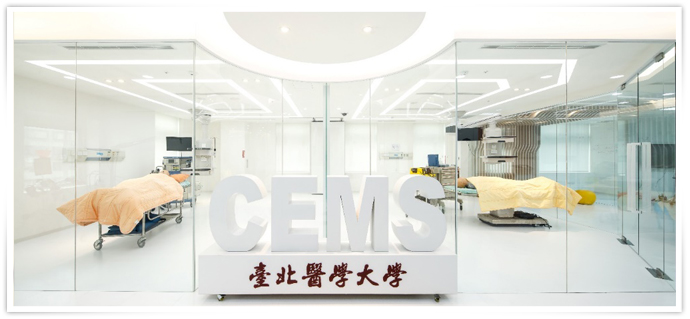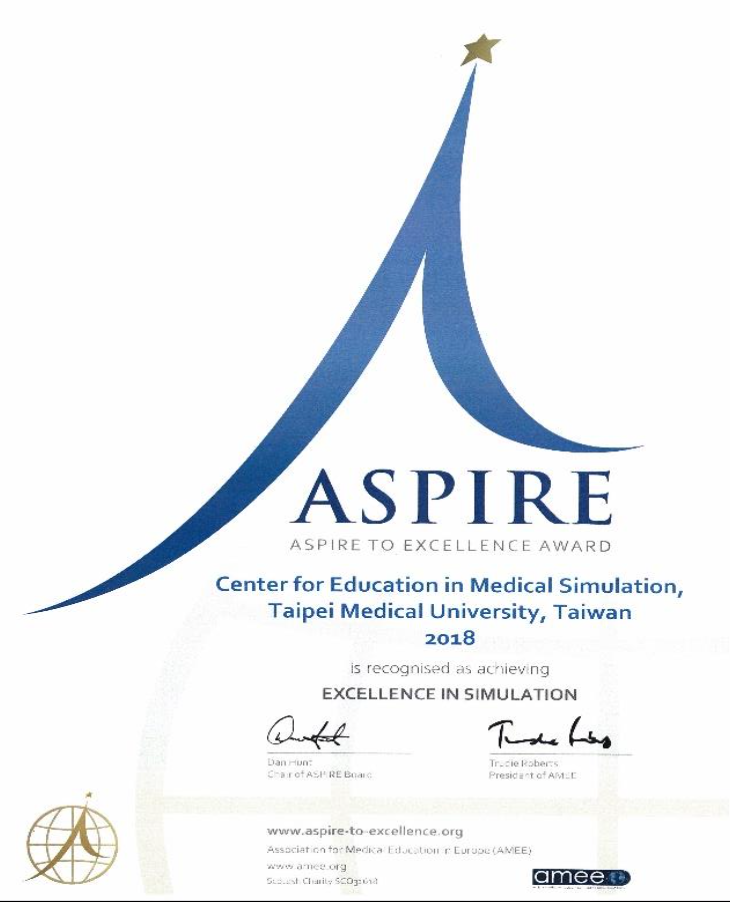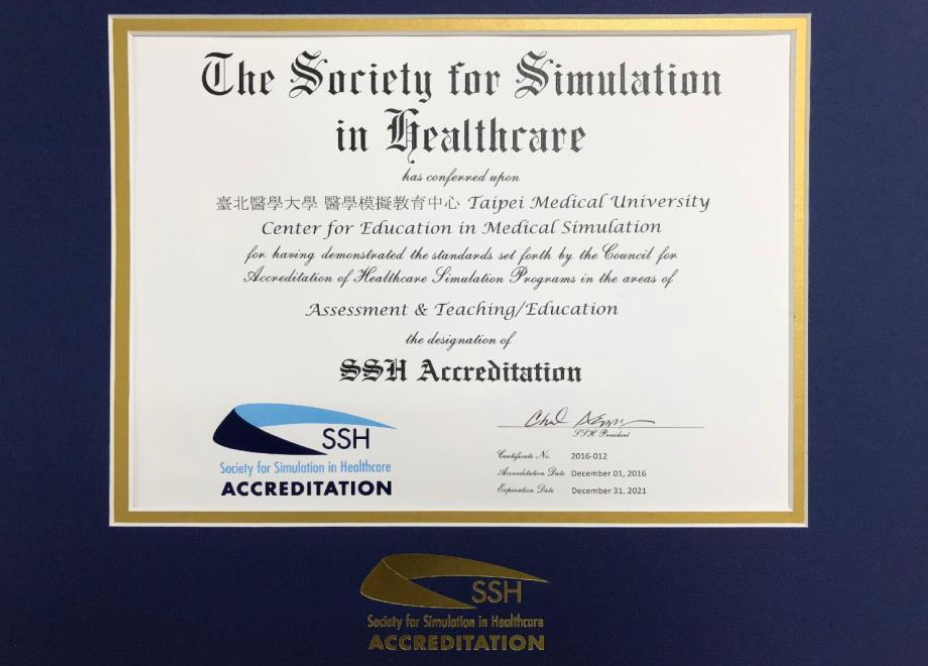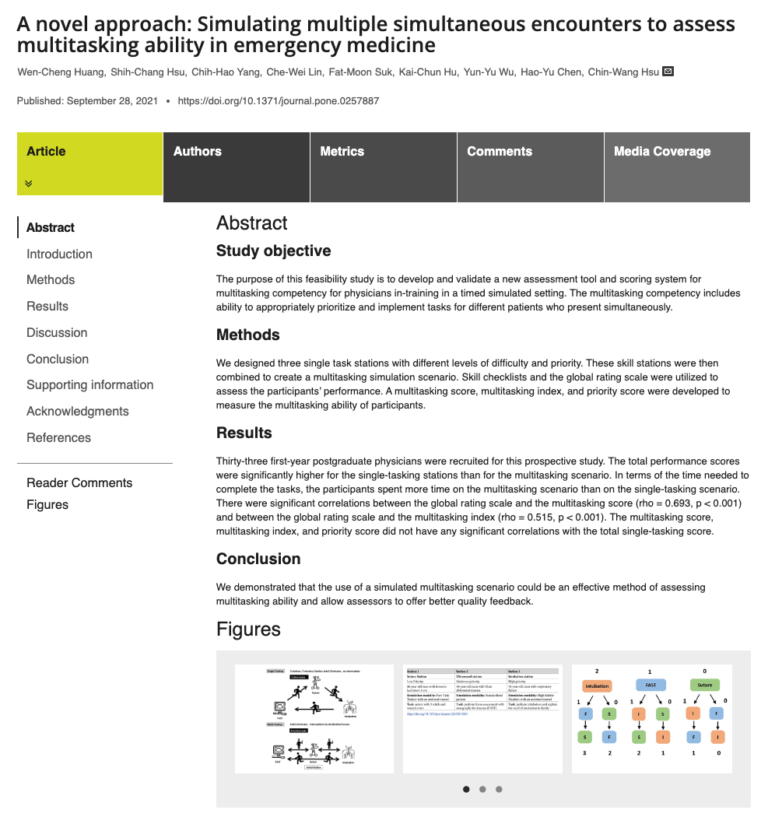Medical Simulation Helps Healthcare Startups Accurately Identify Market Needs
The Digital Health Translational Industry-Academic Alliance (DHT) collaborates with TMU’s Center for Education in Medical Simulation (CEMS) to provide human factors engineering validation and professional evaluations for smart medical device manufacturers. This partnership helps businesses precisely understand real user needs, accelerating the commercialization of innovative digital health solutions.
Medical Innovation Starts with TMU Medical Simulation!

Do you want to accelerate product development and gain precise market insights?
Many world-renowned manufacturers already leverage cutting-edge medical simulation centers to rapidly obtain valuable product development data and user insights, speeding up time-to-market.
Now, in Taiwan, you no longer need to go abroad and pay expensive fees to access world-class medical simulation services!
With international accreditation and long-term collaborations with leading medical simulation centers worldwide, TMU CEMS is your key to accelerating product innovation.
DHT & TMU CEMS – Empowering Startups to Build the Best User Experience
Internationally Accredited Medical Simulation Center


- The TMU Center for Education in Medical Simulation (CEMS) follows the mentorship of Professor Paul Phrampus, former President of the Society for Simulation in Healthcare (SSH). TMU CEMS is in academic alliance with the Winter Institute for Simulation, Education, and Research (WISER) at the University of Pittsburgh, a global leader in medical simulation.
- 2018 ASPIRE Award for Excellence – Recognized by AMEE, the world’s most authoritative organization in medical education. TMU CEMS was the only institution in Asia to receive this prestigious award at the time, marking its achievement of international standards.
- 2016 SSH Accreditation – Certified by the Society for Simulation in Healthcare (SSH), USA, affirming its excellence in medical simulation education and research.
Three Key Advantages – Accelerating Product Development & Market Validation
Scenario-Based Design & Validation
With an experienced medical simulation team, TMU CEMS offers customized scenario-based simulations that objectively assess product efficacy and risks. By leveraging TMU’s advanced simulation environment, the center conducts professional product evaluation processes.
No Need for IRB Approval
Unlike clinical trials, IRB approval is not required for product testing within the simulation environment. This allows early-stage product testing and human factors engineering validation to be conducted quickly and efficiently, significantly reducing time and development costs.
Clinical Team Engagement
TMU CEMS provides access to an extensive network of medical professionals, enabling tailored recruitment of multidisciplinary clinical teams, including physicians, nurses, and medical technicians, for specialized simulation testing.

“FDA certification is just a ticket to entry—true success comes from user acceptance and market recognition. Our goal is to help startups identify and optimize the key factors that enhance user experience before entering the market.”
Che-Wei Lin (Thomas), Director of TMU CEMS
Four Core Services – Supporting Product Certification & Global Market Entry

Human Factors Engineering Validation
Conducts simulation-based verification without requiring IRB approval. Aligns with startup development timelines. Facilitates user testing and experience optimization
Professional Evaluation Reports
Provides objective, third-party research reports. Supports FDA submission and investor evaluations. Includes expected product efficacy analysis, simulated scenario trials, and assessment reports


Risk Identification & Analysis
Expert-designed validation scenarios tailored to product needs. Hands-on expert testing to collect comprehensive user experience data. Quantitative risk assessment to identify potential product vulnerabilities.
International Resource Integration
Long-term partnerships with top global institutions, including: University of Pittsburgh, University of Miami, Johns Hopkins University, Mayo Clinic. Facilitates overseas validation, enhancing global market credibility

Medical Simulation Methodology Featured in Academic Journals

Common Q&A on Human Factors & Usability Engineering Assessment for Medical Devices
- Class III medical devices must submit “Basic Safety and Effectiveness Requirements & Technical Documentation Summary”, which includes human factors/usability engineering assessment data as part of the regulatory submission.
- Class I and II medical devices are not required to submit usability data during pre-market review. However, if the device’s user interface, usage environment, or operating conditions could lead to user errors, it is recommended to conduct a human factors risk analysis to reduce risks to an acceptable level.
- For medical device software, human factors/usability risk assessments should be carefully evaluated when:
- User interface modifications or design changes are made.
- New types of users are introduced.
- Human factor-related incidents have been reported and flagged for regulatory review.
Taiwanese medical device manufacturers can refer to the following guidelines:
- Taiwan FDA (TFDA) “Human Factors/Usability Engineering Assessment Guidelines” (announced in 2020).
- CNS National Standards (MOEA, 2021) – Medical Devices: Part 1: Application of Usability Engineering to Medical Devices.
These standards align with IEC 62366-1 (“Application of Usability Engineering to Medical Devices”), which is widely recognized internationally. However, the report format and specific details must be adjusted according to each country’s regulatory requirements.
IEC 62366-2:2016 provides multiple hazard identification assessment methods, such as: interviews, contextual inquiries, focus group discussions, task analysis, think-aloud protocols.
The choice of method depends on product characteristics and historical issues with similar devices.
The most widely accepted methods for regulatory approval include: formative Evaluation (used in early design stages to identify usability issues), and summative Evaluation (used in final stages to validate the design and confirm usability).
Sample sizes should be determined based on user characteristics, usage scenarios, and the environment.
TFDA recommendations for different usability testing phases:
- Formative Evaluation: 5–8 participants to identify and refine design issues.
- Summative Evaluation: At least 15–20 participants to ensure that the final design meets usability requirements.
- FDA Human Factors Validation:
- A minimum of 15 participants is required for usability validation to meet FDA’s reliability and validity standards.
Reference: Taiwan Food and Drug Administration (TFDA), Ministry of Health and Welfare; EN 62366-1: Medical Devices – Application of Usability Engineering
